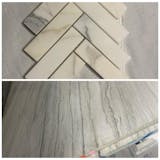Mining the world's most precious marble in Italy | DW News

Deep in the Apuan Alps of Italy, a unique quarry extracts some of the world's most sought-after marble. This isn't just any stone; it's the very same statuary marble that Michelangelo used centuries ago for his masterpieces. Mined at an altitude of about 1,000 meters, this exceptional material commands a high price, with a single block costing over €1,000, and the process of creating fine slabs can take days.
The Heart of Italian Marble Mining
The region has a history of marble extraction spanning over 2,000 years, but the Apuan Alps are where the most valuable marble is found. Geologist Daniele Manani and his team are responsible for producing thousands of tons of this precious material annually. They specialize in statuario marble, easily identified by its unique white quality and how light passes through it due to its fine grain.
Key Takeaways
- The most expensive marble in the world is extracted from the Apuan Alps in Italy.
- This statuario marble was favored by Michelangelo.
- Mining operations take place at high altitudes, around 1,000 meters.
- Extracting and processing marble is a labor-intensive and time-consuming process.
- The company Eniro holds the mining rights and employs advanced techniques.
The Extraction Process
The mining rights in this region belong to the company Eniro. Here, workers use massive band saws and chainsaws to cut blocks from the rock face, a process that can take up to 20 hours. Once cut, these massive blocks, some weighing as much as 120 tons, need to be transported. This is achieved by inflating a cushion placed in the cut gap, gradually tipping the slab over. Even with careful planning, blocks can sometimes break along the natural veins, but the remaining pieces are often still usable.
Precision and Planning in Marble Production
Geologists play a vital role by meticulously mapping the different marble types found on the mountain. This is crucial because customers often order marble based on specific patterns for their projects. The team aims to create blocks that are as suitable as possible for these custom commissions, with daily checks on the production process.
From Quarry to Finished Slab
After extraction, the blocks are transported down the valley by truck. At the Eniro production facility, these blocks, weighing up to 60 tons, are registered and then cut into fine slabs. This sawing process alone can take around 20 hours. Gino Chenini, the head of the sawmill, emphasizes the need for patience and a significant amount of water, with machines using about 1,000 liters per minute. Importantly, this water is recycled and reused in a closed-circuit system. The saws are equipped with industrial diamonds to ensure they are harder than the marble itself.
Polishing and Finishing
The next stage involves polishing the slabs. A resin layer is applied first, which fills any hairline cracks in the marble, making the surface smooth. This layer is later sanded off. These polished slabs can be very thin, ranging from several centimeters down to just 5 millimeters, and cost up to €300 per square meter. Polishing is done using a combination of brushes, rubber, and diamond tools, with each type of marble requiring a specific polishing technique.
Diverse Applications and Artistic Collaboration
Finally, the marble is cut to the required shape for its intended use, creating thin tiles or other custom pieces. Eniro supplies marble for a variety of projects, including mosques in Abu Dhabi, corporate headquarters in the US, and luxurious flooring. In the final assembly stages, pieces are carefully matched by color and pattern to ensure the most aesthetically pleasing result when displayed.
A Legacy of Marble and Innovation
Paolo Carly, the head and owner of the 200-year-old company, isn't worried about depleting the marble mountain. He notes that the amount extracted is minimal compared to the vast reserves, which are estimated to last for thousands of years. While white statuary marble remains their core business, Eniro has also embraced 3D technology to create sculptures, blending manual skills with robotics. They collaborate with renowned artists, which helps them develop modern technology and integrate artistic design into their daily operations. To nurture the next generation, the company partners with a local vocational school, where students work on projects inspired by masters like Michelangelo, continuing a legacy of artistry and craftsmanship.


Leave a comment